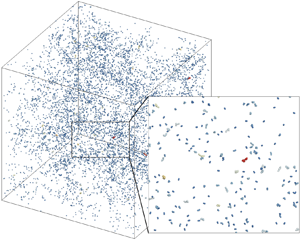Article contents
Effect of long-range Coulomb repulsion on adhesive particle agglomeration in homogeneous isotropic turbulence
Published online by Cambridge University Press: 31 March 2021
Abstract

We conduct numerical investigations on the early-stage agglomeration of identically charged microparticles in homogeneous isotropic turbulence. The turbulent flow field is evolved by direct numerical simulation, and the adhesive discrete element method is employed to simulate particle transport and agglomerate formation. Through extensive simulations, the effect of Coulomb repulsion on collision frequency is examined. As the particle charge increases, the collision kernel, when plotted as a function of the Stokes number St, is found to change from the increasing trend to the decreasing trend. From decomposition analysis, it turns out that this monotonicity inversion is caused by the shifting of the dominant collision mechanism from preferential concentration to the sling effect. Besides, once particles contact with each other, the sticking probability is shown to solely depend on the dimensionless adhesion parameter,  $A{d_n}$, revealing the major role of interparticle adhesion in the collision process. When the effects of Coulomb repulsion and adhesion both exist, particles with moderate collision velocities are more likely to contribute to the formation of agglomerates. The structure of the agglomerates is then measured using the fractal dimension. It is found that, due to its isotropic feature, Coulomb repulsion effectively reduces the agglomeration rate but has a negligible effect on the structure of agglomerates.
$A{d_n}$, revealing the major role of interparticle adhesion in the collision process. When the effects of Coulomb repulsion and adhesion both exist, particles with moderate collision velocities are more likely to contribute to the formation of agglomerates. The structure of the agglomerates is then measured using the fractal dimension. It is found that, due to its isotropic feature, Coulomb repulsion effectively reduces the agglomeration rate but has a negligible effect on the structure of agglomerates.
- Type
- JFM Papers
- Information
- Copyright
- © The Author(s), 2021. Published by Cambridge University Press
References
- 13
- Cited by



